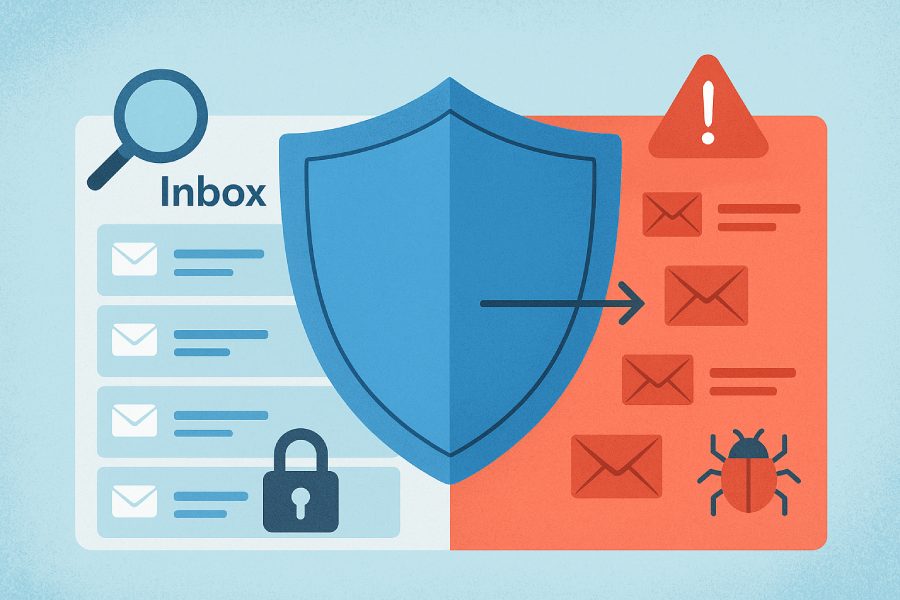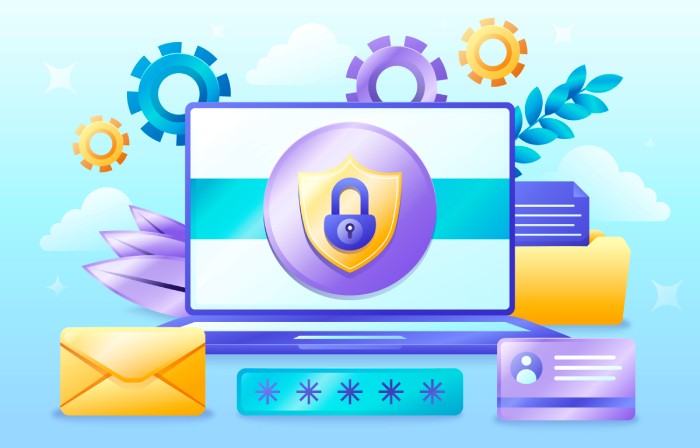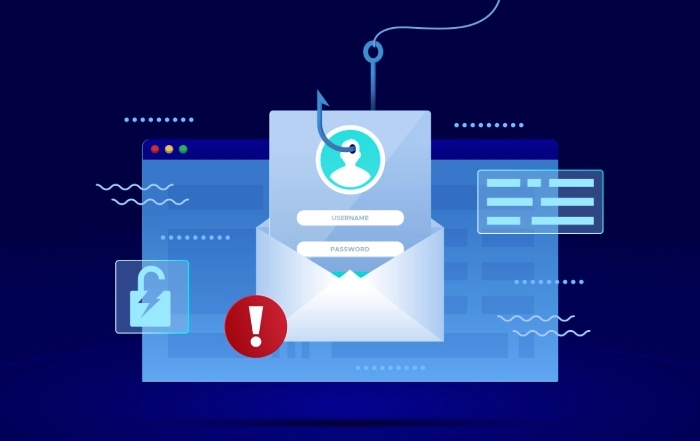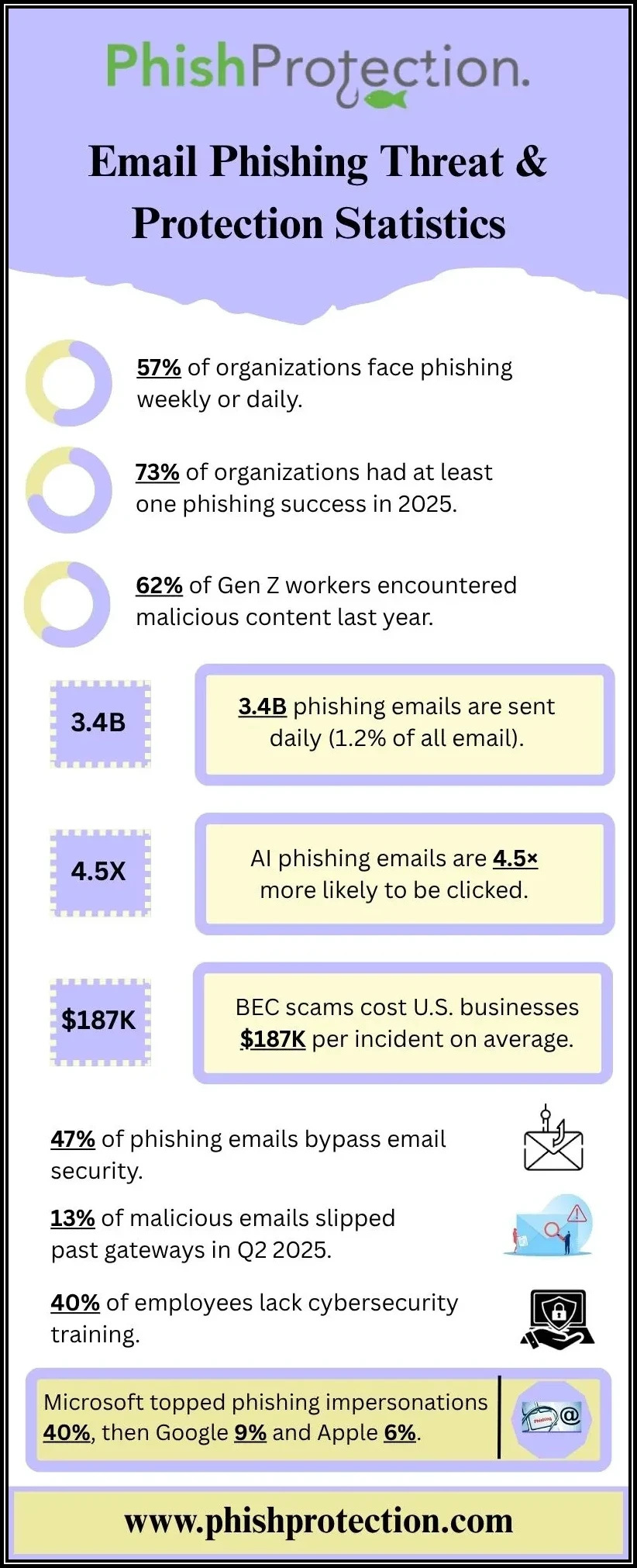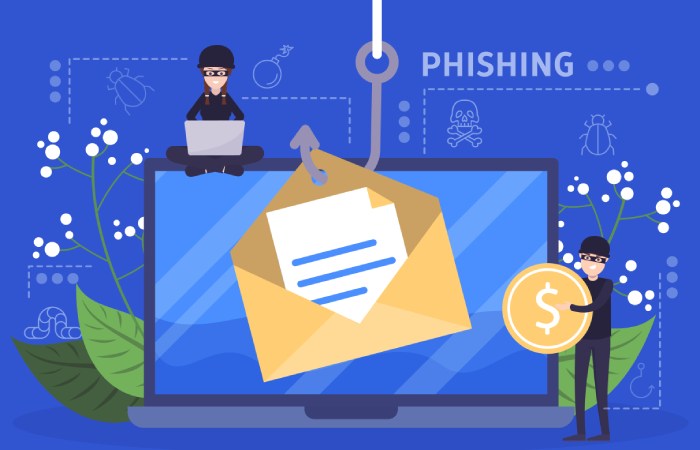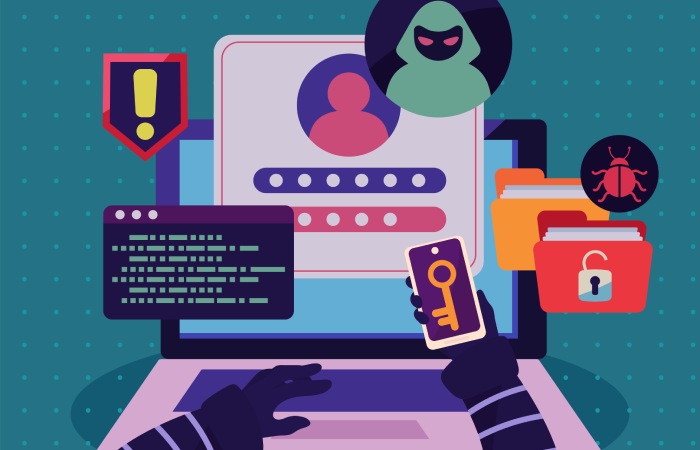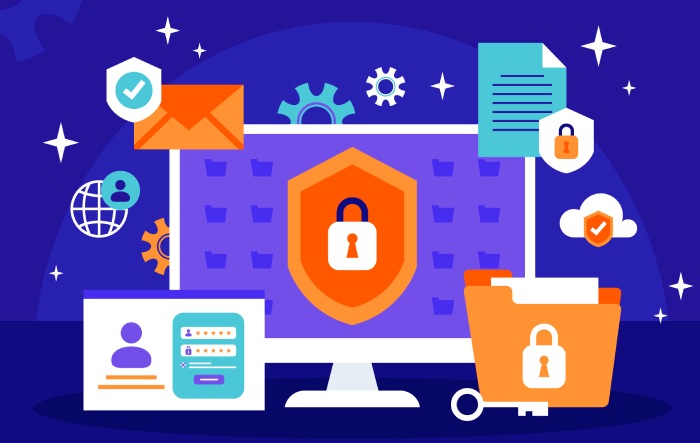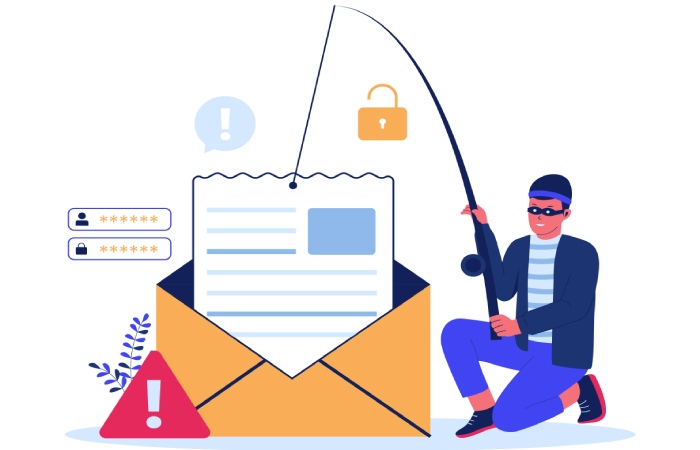Email phishing remains one of the most prevalent threats in the cyber threat landscape, targeting individuals and organizations alike through deceptive tactics aimed at email fraud and credential harvesting. At its core, phishing involves cybercriminals masquerading as legitimate entities via email messages, persuading recipients to divulge sensitive information or deploy malicious payloads such as ransomware. Common phishing techniques include domain spoofing, spear phishing, and social engineering, where attackers manipulate human psychology to bypass traditional security controls.
Domain spoofing is particularly dangerous, as it involves forging the sender’s address to appear as if it originates from a trusted source, effectively bypassing email authentication protocols like Sender Policy Framework (SPF), Domain-based Message Authentication, Reporting & Conformance (DMARC), and DomainKeys Identified Mail (DKIM). Spear phishing is more targeted, focusing on specific individuals with customized emails that are harder to detect due to their personalization. Social engineering techniques often accompany these phishing attempts, exploiting users’ trust and lack of awareness, which can lead to successful cyber attack mitigation challenges.
Phishing kits are another common tool utilized by adversaries; these are pre-packaged software designed to facilitate rapid deployment of phishing campaigns and often include embedded malware filters to install ransomware or other advanced persistent threats after the user clicks malicious links or opens compromised attachments.
The Importance of Email Phishing Filters in Cybersecurity
Given the increasing sophistication of phishing campaigns and associated threats like advanced persistent threats (APTs), the role of email phishing filters has never been more crucial within a comprehensive email security strategy. Anti-phishing software embedded within secure email gateways provides essential layers of defense by intercepting and neutralizing threats before they penetrate an organization’s network.
Phishing filters work alongside malware filters and ransomware filters to ensure email threat protection against known and zero-day threat detection. This is especially important for cloud email security environments like Microsoft Defender for Office 365 and Google Workspace Security, which face high volumes of both legitimate and malicious emails daily. The integration of threat intelligence into these filters enables timely updates from global cybersecurity operations centers, enhancing the capacity to respond swiftly to newly emerging phishing tactics.
In addition, phishing prevention through email policy enforcement and data loss prevention (DLP) mechanisms reduces opportunities for email fraud and credential harvesting, while multi-factor authentication (MFA) complements these defenses by providing additional verification layers even if credentials are compromised.
How Email Phishing Filters Work: An Overview
Email phishing filters operate by combining multiple detection techniques to scrutinize incoming messages for indicators of compromise. The process usually begins at the email gateway — a frontline checkpoint where spam filters analyze email traffic to manage large volumes using bulk email filters to identify spam and legitimate correspondence.
The filtering process involves several key technologies:
- Email authentication verification: Checks email headers and authenticates senders using SPF, DMARC, and DKIM records to detect domain spoofing attempts.
- Heuristic analysis: Examines behavioral patterns within email content and metadata to identify suspicious anomalies that traditional signature-based filters might miss.
- URL filtering and link analysis: Scans embedded URLs for malicious domains or phishing kits, blocking unsafe links before they reach the user’s inbox.
- Attachment scanning and sandboxing: Implements deep inspection of attachments in a controlled environment to catch malware or ransomware hidden in files.
- Real-time scanning with threat intelligence: Incorporates updated insights on evolving attack vectors and phishing campaigns for dynamic defense.
Spam traps and blacklists—compilations of known malicious IP addresses and domains—are fundamental in pre-filtering spam and phishing emails, while whitelists allow verified email sources to bypass stringent filtering, reducing false positives and ensuring business continuity.
Together, these technologies deliver a multi-layered approach ensuring effective phishing detection and email fraud prevention, integral in platforms like Barracuda Networks, Proofpoint, Mimecast, and IronPort, which specialize in email threat protection.
Common Types of Email Phishing Filters
The spectrum of email phishing filters can be broadly categorized by their methodologies and deployment models, each suited to different organizational needs.
- Spam Filters and Bulk Email Filters: These fundamental filters differentiate unsolicited bulk emails from legitimate messages. They rely on heuristic signatures, spam traps, and blacklist lookups to classify content. Solutions such as Symantec Email Security and Fortinet FortiMail leverage these extensively.
- Malware Filters and Ransomware Filters: Focused on detecting and quarantining malicious attachments or embedded links, these filters utilize sandboxing and attachment scanning. Vendors like FireEye Email Security and Trend Micro Email Security offer advanced malware inspection to mitigate ransomware outbreaks.
- Heuristic and Behavioral Filters: Utilizing heuristic analysis, these filters detect unknown, zero-day threats by analyzing anomalies in email sender behavior or message content. Darktrace Email Security and Vectra AI incorporate such sophisticated algorithms.
- Machine Learning Filtering: A cutting-edge approach that applies machine learning algorithms to recognize phishing patterns, even as they mutate to evade traditional defenses. Agari, GreatHorn, and Abnormal Security are industry leaders in employing machine learning filtering for phishing detection.
- Email Authentication Filters: These filters verify the legitimacy of email senders through strict adherence to SPF, DKIM, and DMARC protocols, curtailing domain spoofing attacks and enhancing email authentication integrity. Cisco Secure Email and Trustwave Secure Email Gateway emphasize tight control over email policy enforcement in this arena.
Many enterprises complement these filters with incident response frameworks and user awareness training to bolster phishing simulation exercises, making users less susceptible to social engineering.
Machine Learning and AI in Email Phishing Detection
The convergence of machine learning filtering and AI technologies has revolutionized phishing prevention by enabling proactive and adaptive defense mechanisms. Machine learning models analyze vast datasets encompassing email header analysis, link analysis, and behavioral signals to detect subtle phishing attempts with greater accuracy, reducing both false positives and false negatives that traditional filters often encounter.
Advanced platforms such as Cofense, Abnormal Security, and PhishLabs deploy threat hunting techniques augmented with AI to identify sophisticated credential harvesting and spear phishing attacks in real time. These systems assimilate threat intelligence feeds from global sources, empowering secure email gateways to respond dynamically to the evolving cyber threat landscape.
Moreover, AI-driven phishing detection can integrate with email encryption and secure messaging protocols to ensure confidential communications maintain integrity even if intercepted. The synergy between AI and multi-factor authentication further enhances cyber attack mitigation by minimizing the likelihood of successful breaches.
The adoption of AI by vendors including Microsoft Defender for Office 365, Palo Alto Networks Prisma Access, and Mimecast enhances the capacity for zero-day threat detection and automated phishing prevention, providing organizations with robust cloud email security solutions capable of contending with ever-changing tactics employed by attackers deploying phishing kits and other threat vectors.
Statistical Data: Email Phishing and Spam Filter Efficacy
-
- Over 90% of cyber attacks begin with a phishing email
- Spam filters block approximately 85% of unwanted emails before reaching inboxes
- Machine learning-powered phishing detection reduces false negatives by up to 70%
- Spear phishing attacks achieve a success rate of about 15% without user awareness training
- Email attachments constitute 60% of malware infection vectors
- Multi-factor authentication implementation decreases phishing-related breaches by 80%
- Real-time threat intelligence integration cuts incident response time by 50%
- Domain spoofing attempts have increased 400% over the past two years
- Cloud email security adoption has grown by 35% annually to enhance cyber attack mitigation
- User awareness and phishing simulation programs reduce successful email fraud incidents by 60%
Sources: Various industry reports, including Proofpoint, Mimecast, Microsoft security advisories, and Cisco cybersecurity whitepapers.
Role of Blacklists and Whitelists in Spam Protection
Blacklists and whitelists serve as fundamental components in any effective spam filter ecosystem, providing a first line of defense in email security. A blacklist is a curated list of IP addresses, domains, and email addresses known to distribute spam, phishing attempts, or malware. When an email gateway encounters a sender on this list, it blocks or quarantines the message to prevent infiltration into user inboxes. Conversely, a whitelist contains trusted senders, bypassing many of the spam filter’s rigorous checks to reduce false positives that could disrupt legitimate business communications.
Enterprise-grade filtering solutions like Proofpoint and Mimecast rely heavily on dynamic blacklists updated through global threat intelligence feeds, which incorporate data from spam traps and observed cyber attack campaigns. In contrast, whitelists are often maintained internally by security teams, with lists generated from organizational contacts and verified domains.
Blacklists and whitelists are complemented by advanced controls such as sender policy framework (SPF), DMARC, and DKIM standards for robust email authentication, which help to deter domain spoofing—a common tactic used in spear phishing and broader social engineering attacks. While blacklists are invaluable, their static nature makes them less effective against zero-hour or zero-day threat detection scenarios, emphasizing the need for more adaptive filters like those employing machine learning filtering.
Analysis of Email Headers and URLs for Phishing Detection
A vital aspect of email threat protection is the thorough analysis of email headers, which reveal metadata such as the sender’s IP address, message path, and authentication results. Email header analysis tools help cybersecurity teams detect anomalies indicating email fraud or forged message origins. For example, mismatches in SPF or DKIM verification results can suggest attempts at domain spoofing.
URL filtering is another critical technique to combat phishing. Malicious actors embed harmful links in emails to harvest credentials or deliver payloads via ransomware filter mechanisms or malware filter processes. Effective phishing detection systems leverage link analysis to verify the destination URLs, flagging those associated with known phishing kits or suspicious redirections. Real-time inspections can also incorporate sandboxing, where suspicious attachments and URLs are executed in an isolated environment to observe behaviors before allowing delivery.
Platforms like Cofense specialize in sophisticated phishing detection based on URL reputation and dynamic threat intelligence, while solutions from Microsoft Defender for Office 365 integrate these techniques with deep email authentication validations, reinforcing defenses against credential harvesting and social engineering campaigns.
Heuristic vs. Signature-Based Phishing Filters
Phishing filters generally fall into two major categories: heuristic analysis and signature-based detection.
Signature-based phishing filters operate by scanning emails for known malware signatures, spam templates, or previously identified phishing patterns stored in a database. While effective against established threats, these filters often struggle with novel or advanced persistent threats (APTs) that employ polymorphic tactics or social engineering variations, resulting in increased false negatives and missed attacks.
Conversely, heuristic analysis employs behavioral and statistical models to detect anomalies in email content and behavior patterns, such as deceptive language, unusual link structures, or anomalous attachment types. This approach enhances phishing prevention by identifying new threats without relying on explicit signatures. Modern cybersecurity vendors incorporate heuristic techniques with machine learning filtering to adaptively refine detection based on evolving tactics, reducing false positives without hindering legitimate communications.
For instance, Darktrace Email Security and Vectra AI utilize AI-driven heuristic and anomaly detection to uncover email fraud and sophisticated social engineering attempts that evade traditional filters.
User Behavior and Its Impact on Filter Effectiveness
Human factors remain a critical vulnerability in email security frameworks. Even the most advanced anti-phishing software can be undermined by users inadvertently clicking on malicious links or providing credentials in response to fraudulent prompts. Therefore, user awareness training and continuous phishing simulation exercises are essential adjuncts to technical controls.
Programs like KnowBe4 and Mimecast Awareness Training provide simulated spear phishing campaigns to educate users on identifying social engineering ploys. Such initiatives reduce risk by increasing detection capabilities and promoting behaviors aligned with cyber attack mitigation strategies.
Moreover, the implementation of multi-factor authentication (MFA) significantly mitigates risks arising from compromised credentials, providing an additional barrier against credential harvesting. Combining user education with enforced email policies and email policy enforcement enhances filter effectiveness, creating a comprehensive defense-in-depth model.
Challenges and Limitations of Current Phishing Filters
Despite substantial advances in cloud email security and secure email gateways, several challenges persist. The constant evolution of the cyber threat landscape, including rapidly emerging phishing kits and refined social engineering techniques, imposes pressure on filter algorithms and update cycles.
Static blacklists, while foundational, struggle to address zero-day threats and sophisticated variants, often leading to a trade-off between minimizing false positives and avoiding false negatives. Bulk email filters must also balance spam traps and genuine marketing communications to avoid disrupting organizational workflows.
Additionally, attackers increasingly exploit compromised internal accounts to launch insider phishing, bypassing external filters by exploiting trusted sources. In these cases, traditional perimeter defenses fall short without active threat hunting and continuous monitoring. Furthermore, advanced threats like ransomware and advanced persistent threats may use encrypted messaging or email encryption to evade detection, requiring holistic approaches that combine endpoint, network, and email-level protections.
Best Practices for Configuring and Maintaining Phishing Filters
Optimizing phishing filters demands a multi-layered approach incorporating technical precision and organizational awareness. First, it is crucial to implement comprehensive email authentication protocols, including SPF, DMARC, and DKIM, ensuring that spoofed domains are identified and blocked. Enterprises should leverage secure email gateway solutions from providers such as Barracuda Networks, Fortinet FortiMail, or Trend Micro Email Security, which incorporate extensive spam filter components, attachment scanning, and real-time URL analysis.
Regular updates to blacklists and whitelists, informed by dynamic threat intelligence feeds, are essential to keeping pace with emergent threats. Application of machine learning filtering helps to identify novel phishing tactics while minimizing disruptions caused by false alerts.
Ongoing user awareness training complements technical defenses, ensuring users are equipped to recognize and report suspicious emails effectively. Incident response plans must be clearly defined, incorporating rapid investigation and remediation workflows in the event of a phishing breach.
Finally, organizations should embrace continuous improvement through email policy enforcement, periodic filter performance reviews, and integrations of advanced technologies like sandboxing and email header analysis. Peer feedback from forums such as Reddit’s MSP community offers practical insights into deployment strategies and challenges faced by IT professionals.
By adhering to these best practices, businesses can significantly enhance their resilience against phishing attacks, safeguarding sensitive information and maintaining robust cybersecurity postures.
Integration of Email Phishing Filters with Other Security Tools
Integrating email phishing filters with a broader cybersecurity framework is essential for robust email security. Modern email gateways, such as those offered by Proofpoint, Mimecast, and Microsoft Defender for Office 365, incorporate advanced spam filters, malware filters, and anti-phishing software that work seamlessly with other security tools, including endpoint protection, data loss prevention (DLP), and secure messaging platforms. This integration helps organizations defend against phishing, spear phishing, domain spoofing, and advanced persistent threats by combining phishing detection, attachment scanning, and URL filtering with real-time threat intelligence.
By feeding information such as threat hunting data and email header analysis into incident response systems, email threat protection becomes proactive rather than reactive. For example, incorporating Sender Policy Framework (SPF), DMARC, and DKIM for email authentication ensures domains are validated, reducing the risk of email fraud and credential harvesting. Additionally, multi-factor authentication (MFA) adds a crucial layer of defense against social engineering attacks.
Integration with security information and event management (SIEM) tools allows for quicker incident response and improved email policy enforcement. Platforms like Fortinet FortiMail and Cisco Secure Email demonstrate how secure email gateways serve as the frontline by employing machine learning filtering, heuristic analysis, sandboxing, and zero-day threat detection, dramatically reducing false positives and false negatives.
Case Studies: Success Stories and Failures in Phishing Protection
Examining real-world examples provides invaluable insights into the effectiveness of different phishing protection strategies. For instance, Barracuda Networks, employing sophisticated phishing kits and threat intelligence, successfully mitigated a widespread ransomware campaign through rapid URL filtering and sandboxing techniques. Their multi-layered approach, integrating email encryption and secure messaging, effectively thwarted credential harvesting attacks.
On the other hand, several organizations have experienced failures due to over-reliance on bulk email filters without comprehensive threat intelligence integration. One notable case involved an advanced persistent threat bypassing basic spam filters by leveraging social engineering and domain spoofing techniques. This incident exposed critical gaps, emphasizing the need for ongoing user awareness training and phishing simulations to equip employees against such sophisticated attacks.
Google Workspace Security and Symantec Email Security have been pivotal for many enterprises, reducing phishing incidents significantly through robust incident response frameworks combined with machine learning filtering, which adapts to new attack patterns. These case studies highlight the importance of a multi-faceted approach combining technology, policy, and user education.
How to Educate Users About Avoiding Phishing Attacks
User awareness training is fundamental in phishing prevention. Programs like Mimecast Awareness Training and platforms from KnowBe4 specialize in equipping users with skills to detect spear phishing attempts, social engineering exploits, and domain spoofing. These initiatives often include phishing simulation exercises that replicate real-world attack scenarios, boosting user vigilance.
Education should emphasize recognizing phishing indicators such as suspicious links (analyzed through link analysis), unexpected attachments flagged by malware filters, and anomalies uncovered in email header analysis. Reinforcing the use of multi-factor authentication ensures that even if credential harvesting attempts succeed, unauthorized access is blocked.
This training must also cover email policy enforcement, teaching users the importance of reporting suspicious emails to incident response teams promptly. Frequent updates on the evolving cyber threat landscape help maintain awareness of emerging tactics, including phishing kits and zero-day threats, ensuring ongoing user preparedness.
Future Trends in Email Phishing Filters and Spam Protection
Looking ahead, email phishing filters are poised to become even more sophisticated. Advancements in artificial intelligence and machine learning filtering will enhance real-time scanning capabilities, allowing for ultra-precise heuristic analysis. Vendors such as Darktrace Email Security, Vectra AI, and Area 1 Security are pioneering solutions that detect and neutralize phishing attacks before they reach the inbox by continuously evolving against new phishing kits, ransomware filters, and sophisticated social engineering methods.
Cloud email security will become the norm, integrating seamless, secure gateways from providers such as Palo Alto Networks, Prisma Access, and Trend Micro Email Security. These platforms will feature advanced threat hunting and comprehensive email threat protection, applying DLP strategies alongside spam traps and whitelist/blacklist management to minimize false positives while ensuring zero false negatives.
Moreover, enhanced email encryption standards and secure messaging protocols will converge with stronger email authentication methods, such as extended use of DMARC and DKIM, to dismantle domain spoofing attempts. Incident response will leverage automation combined with human expertise to accelerate cyber attack mitigation, thereby minimizing potential damage from email fraud and credential harvesting.
The synergy between technology and user awareness, supplemented by ongoing phishing simulations, will fortify defenses in an ever-changing cyber threat landscape, marking a significant shift towards proactive and intelligent email security.
Key Takeaways
- Integration of phishing filters with broader cybersecurity tools enhances incident response and reduces false positives and negatives.
- Real-world cases show that technology combined with ongoing user awareness training is crucial in preventing phishing and credential harvesting.
- Education programs focusing on phishing simulation and multi-factor authentication strengthen human defenses against email fraud and social engineering.
- Future email security solutions will rely heavily on AI-driven threat hunting, email authentication protocols, and cloud email security for comprehensive protection.
- Proactive phishing prevention requires synergy between advanced technologies, continuous user training, and dynamic policy enforcement.

